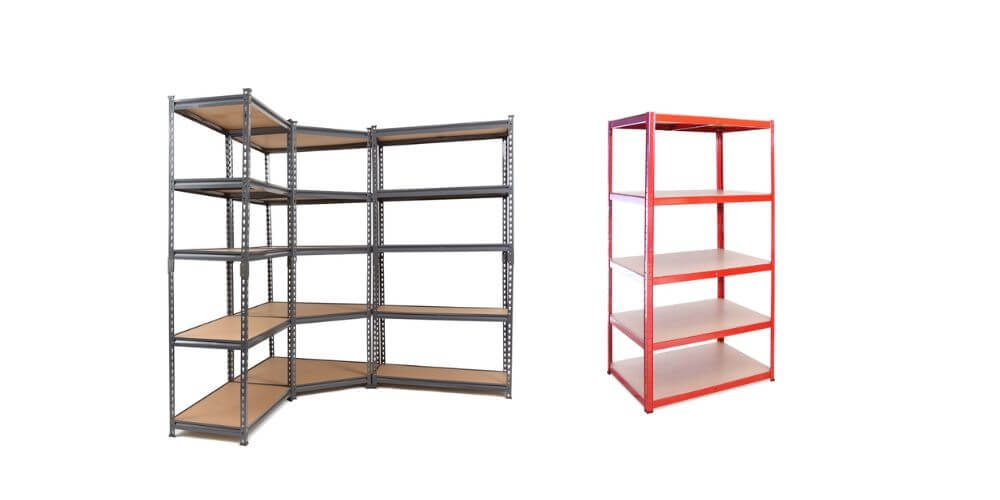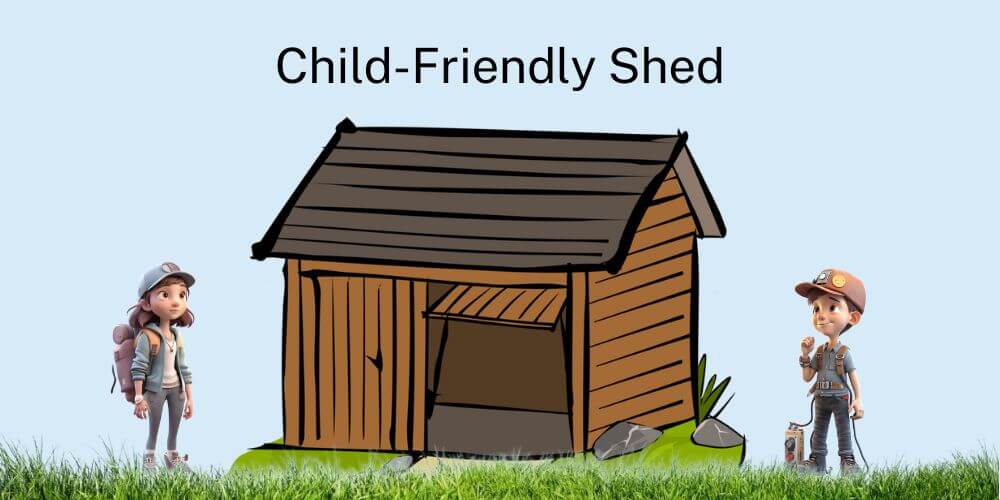Can I put shelves in a Shed? Many people use sheds as a storage space for gardening tools, bicycles, and other equipment. However, as the need for more storage space arises, people often wonder if they can install shelves in their sheds.
Yes, you can put shelves in a shed, but there are a few things to consider before doing so.
The first thing to consider is the weight of the items you plan to store on the shelves. Shelves made of wood or metal are strong enough to hold a considerable amount of weight, but it’s essential to ensure that the shed’s walls can support the weight of the shelves and their contents. Additionally, the shelves should be secured to the walls properly to prevent them from collapsing.
Another factor to consider is the size of the shed and the number of shelves you need. It’s crucial to plan the placement and size of the shelves to ensure that they don’t take up too much space and interfere with your ability to move around the shed.
Assessing the Shed
When considering whether or not to put shelves in a shed, it is important to first assess the shed itself. This involves checking the structure of the shed and measuring the available space.
Checking the Shed’s Structure
Before installing shelves in a shed, it is important to ensure that the shed is structurally sound. This involves checking for any signs of damage, such as cracks, rot, or insect infestations. If any damage is found, it should be repaired before shelves are installed to prevent further damage.
Additionally, it is important to ensure that the shed is level and stable. Shelves should not be installed in a shed that is leaning or unstable, as this can cause the shelves to collapse or fall over.
Measuring the Space
Once the shed’s structure has been assessed, the available space should be measured to determine the best location for shelves. This involves measuring the height, width, and depth of the shed, as well as any obstacles that may affect shelf placement.
When measuring the available space, it is important to consider the size and weight of the items that will be stored on the shelves. Heavy items should be placed on lower shelves to prevent the shelves from becoming top-heavy and unstable.
In addition to measuring the available space, it may be helpful to create a diagram or layout of the shed to better visualise the placement of shelves. This can help to ensure that the shelves are installed in the most efficient and practical manner possible.
Overall, assessing the shed is an important first step in determining whether or not shelves can be installed. By checking the structure and measuring the available space, homeowners can ensure that shelves are installed safely and effectively.
Choosing the Right Shelves
When it comes to choosing the right shelves for a shed, there are several factors to consider. From the material to the size and capacity, and even the style and design, each aspect plays a crucial role in ensuring that the shelves are functional and suitable for the intended purpose.
Shelves Material
The material of the shelves is an essential consideration. The most common materials used for shed shelves are wood, metal, and plastic. Each material has its advantages and disadvantages.
Wooden shelves are sturdy and can withstand heavy loads. They are also aesthetically pleasing and can be painted or stained to match the shed’s decor. However, they require regular maintenance to prevent rotting and warping.
Metal shelves are durable and can withstand harsh weather conditions. They are also easy to clean and maintain. However, they can be prone to rusting and can be noisy when items are placed on them.
Plastic shelves are lightweight, easy to assemble, and require minimal maintenance. They are also resistant to rust and rotting. However, they may not be as sturdy as wooden or metal shelves and may not be suitable for heavy loads.
Type of shed
Plastic sheds tend to be lighter weight than wooden or metal sheds, so you’ll want to select shelves that won’t put too much weight on the walls. You may want to consider using lightweight plastic or wire shelving units, as these won’t add too much weight to the walls of your shed.
For wooden sheds, you can opt for heavier-duty shelves made of wood or metal. These shelves can hold more weight and are great for storing heavier items like tools and equipment. When installing shelves in a wooden shed, be sure to use sturdy brackets and screws to secure the shelves to the walls.
Metal sheds are also great for storing heavy items, so you’ll want to choose shelves that are sturdy and can support the weight of your items. Metal shelving units are a great choice for this type of shed, as they are durable and can hold a lot of weight.
Size and Capacity
The size and capacity of the shelves are crucial factors to consider. The shelves should be proportionate to the size of the shed and should provide adequate storage space. The weight capacity of the shelves should also be considered, especially if heavy items will be stored on them.
Style and Design
The style and design of the shelves are also important considerations. The shelves should complement the shed’s overall design and decor. Open shelves are ideal for storing frequently used items, while closed cabinets are suitable for storing items that need to be protected from dust and moisture.
Final Thoughts
Shelves in a shed are a great way to make the most out of your storage space. Whether your shed is made of plastic, wood, or metal, there are shelves that will work for your space. By using vertical space and keeping your shed organized, you can make it easier to find what you need and keep your tools and equipment in good condition.
So why not invest in some shelves for your shed today? Your future self will thank you for it!



